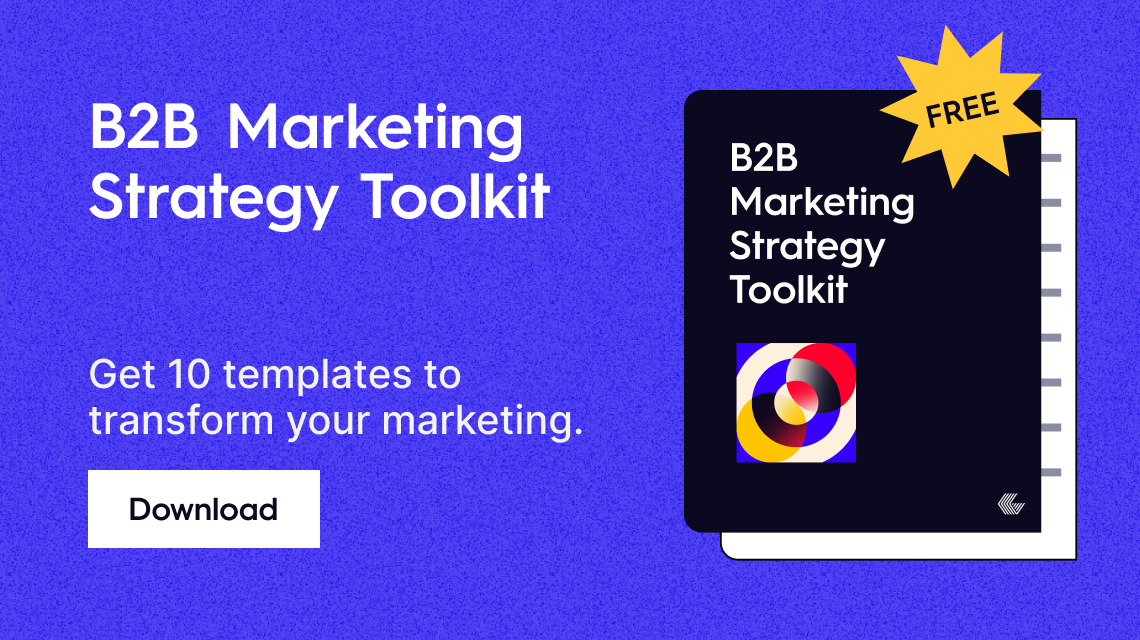From site chatbots, to software integrations, to automated product descriptions, we are living in an AI world of marketing. And while the promise of AI is its ability to help us do things more efficiently, the blanket application of AI—particularly in marketing—has weakened one of the most important elements of brand-building: the connection between humans and brands.
Company-consumer interactions across the buyer journey have become increasingly bland, generic, and even clinical. (Much of this is due to the AI slop that has overtaken the web.) There is no personality. No value. Nothing that would make consumers trust or even want to engage further with brands. This is not the failure of AI, but it is a problematic side effect.
If you want your brand to thrive, you need to cultivate meaningful, memorable connections with your customers at key touchpoints—but that can’t be done through AI tools alone. That’s not to say that AI doesn’t have its place. It certainly does, but too many brands have lost sight of what these AI shortcuts are meant to help them do: build trusting relationships with their customers. (This is especially true for B2B brands, who need to convince multiple individuals to buy-in to their product/solution.)
If you can make your brand stand out against the competition by cutting through the automated noise, speaking to their desires, and stirring their emotions, you can win your market. But to do this successfully, you need realign and recommit your practice to prioritize those human connections.

How to Connect with Consumers in an AI World
Remember that your brand is your last remaining competitive advantage. What people remember most is the way your brand made them feel, so audit every touchpoint through that lens. How does your audience want to feel at each stage? How is your communication likely to make them feel? How does their user experience contribute to or detract from that feeling? If you can identify your most powerful opportunities for emotional connection, you can optimize your marketing to cultivate those feelings.
There are many creative ways to do this and, again, AI tools can assist in this work. But remember that audiences are more savvy and more AI-literate than ever. (Translation: They can spot autogenerated BS a mile away.) So look to bring this more human-centric communication to life in an authentic, intuitive way. These are some of the best ways to start.
1) Get hyperspecific in your messaging.
Brand messaging that’s an inch deep and a mile wide doesn’t work anymore. You’re not a brand for everyone; you’re a brand for a very specific group with very specific needs. Consider Kevin Kelly’s “1,000 True Fans” essay, which argues that to be a successful entrepreneur, you only need 1,000 core fans. When you’re crafting your marketing strategy, think about those core fans and tailor everything you do to them—and them only.
- Talk about their explicit needs. To build a meaningful relationship, you need to show that you are empathetic to the issues they face. You also need to demonstrate a deep and intimate understanding of what those issues are. Create content that speaks to those issues in real, tangible ways. For example, the project management system Basecamp doesn’t just say, “we help teams collaborate better” on their homepage. They address their audience’s most brutal pain points head on with image-rich language: “Stuff scattered? Falling behind? Even simple things feel like a grind? Your projects need Basecamp.”
- Create intimacy through language. If you want a personable relationship, you need to be personable. Showcase your brand personality and (again) your intimate understanding of their world by using a shared language—slang, inside jokes, memes, IYKYK content, etc. This will endear you to your audience so much more than any generic AI slop copy.
- Talk about the future state you’re promising. No matter what you’re selling, you’re selling a solution to some problem. Once that problem is eliminated, your audience’s lives will be notably improved. Keep the focus on that ideal future state—and tap into the related emotions (e.g., joy, confidence, relief, etc.). For example, Mutiny is a no-code AI platform that helps businesses generate more pipeline. They don’t just say, “We help B2B marketers improve website conversions.” They say, “Turn your website into your #1 revenue channel.” By emphasizing the ideal future state, they create a stronger emotional driver.
Tip: Employ empathy when you brainstorm ideas or make big brand decisions. What do your people want to feel, and how can you make them feel that? For more ways to foster those emotions, see our tips to write emotional copy.
2) Demonstrate vulnerability.
As AI becomes a conduit between brand and consumer, it is harder to break down walls and get a true sense of any brand—the people behind them, their values and beliefs, etc. Creating high-quality brand content that shows layers of vulnerability is a really powerful way to give people that transparency (which will, in turn, build trust).
- Share failures and lessons learned. Instead of only highlighting successes, share stories about past missteps, challenges, or pivots, along with the key takeaways. For example, a SaaS company might publish a case study about a product launch that didn’t go as planned, what they learned from it, and how they improved. (We’ve shared our own lessons learned in business and creative work.)
- Feature employee stories. Showcasing personal stories from executives or employees—whether about overcoming imposter syndrome, navigating industry challenges, or making difficult decisions—can go a long way toward humanizing the brand.
- Address the tough stuff in your industry. Instead of pretending everything is perfect, brands can acknowledge real industry struggles and offer thoughtful insights or solutions. A fintech company, for example, might write about cash flow challenges—and what they’re doing about it. This cultivates empathy with your audience while positioning you as a helpful partner.
Tip: Encourage your audience to share their biggest challenges, pain points, and frustrations too. Polling them about these topics is a great way to source content ideas you know will resonate. (And you might even turn some of their responses into UGC.)
3) Showcase people front and center.
People want to know who they’re buying from, who they’d be working with, and who else you’ve helped. The more you put real humans in the spotlight, the more people will be inclined to trust you.
- Tell better stories about how you genuinely help people. Use customer testimonials and case studies to illustrate the way you’ve improved your customers’ lives. Also, think beyond the traditional case study. Videos, motion graphics, infographics, podcasts, or even illustrative one-sheeters can tell these stories in unique and compelling ways. (You can also adapt these for different channels.) For example, one of the GOAT case studies we’ve seen comes from cybersecurity company Crowdstrike. Instead of a generic case study, they created a crime thriller video that breaks down how they helped the city of Las Vegas through a data breach.
- Highlight your team members. Share employee stories, thought-leadership, company jokes, peeks into your culture, etc. to create relatable content that reflects the humans behind the brand.
Tip: Social media is one of the best places for culture content. Experiment with these 7 types of posts to showcase your culture.
4) Invest in customer experience (CX).
It’s not enough to deliver a message; you need to do it in the most compelling way possible. That means considering everything from timing, to format, to channel—and optimizing to create the most seamless and impactful customer experience.
- Delight your customers where you can. Whether it’s the CTAs on your website, an entertaining confirmation email, or a gamified demo, look for creative and unique ways to add delight, surprise, and brand personality throughout the journey. For example, Duolingo’s B2B offering for corporate training includes the same playful gamification as their consumer app—badges, streaks, and progress tracking, as well as cheeky push notifications like, “You wouldn’t ignore a text from your boss, so don’t ignore your Spanish lesson.”
- Strengthen the bridge between marketing and sales. This is a huge problem, particularly in B2B. The handoff from marketing to sales is a crucial transition, so it’s important that both teams are aligned and clear on their roles. Note: Empowering sales teams with the right content can help make this transition smoother. See our tips to create the right content to close the deal.
Tip: Use insights from your CRM, website behavior, or past interactions to personalize your customer experience (and, yes, this is something you can do with AI). For example, a well-timed email with content based on a prospect’s last engagement can keep them moving through the funnel.
5) Create communities.
A strong community fosters loyalty and advocacy, which AI tools alone cannot achieve.
- Create spaces for dialogue. Use forums, LinkedIn groups, or exclusive webinars to connect customers with your brand and each other. For example, Drift built an exclusive learning hub, Drift Insider, where marketers and sales professionals access premium content, courses, and networking events.
- Provide meaningful engagement opportunities. Host industry events, collaborate on thought leadership, or get other experts to chime in on your audience’s challenges. The questions and conversations these interactions prompt are the building blocks of community. For example, Notion has cultivated a passionate user base through the Notion Community, which includes official forums, local user groups, and ambassador programs. These communities allow users to exchange templates, workflows, and best practices, and provide feedback, turning customers into brand advocates.
Tip: Offer exclusive content and early access to foster deeper engagement with your audience. People are more likely to participate in a community when they feel they’re getting unique value.
How to Balance AI with a More Personal Touch
Remember that building genuine connections with customers in an AI world will always be a balancing act. You can use AI tools to support your strategy and work more efficiently, but these efforts should always be steered by human creativity and emotional engagement.
For example, let AI analyze behaviors, preferences, and trends, but enrich these insights with qualitative methods like interviews, surveys, and direct feedback. For client-facing activities like sales calls or account management, prioritize face-to-face interaction (virtual or in-person). Create a solid infrastructure to support your efforts as you scale, but always sanity check to make sure the content you’re producing will resonate with your audience.
In essence, keep people the priority and use the machines to help you do it.
That said, if you’re struggling to do any of this alone, consider bringing in a partner with the right expertise. Follow our tips to find a strong agency, or see how we’ve helped other people connect with their audiences.





